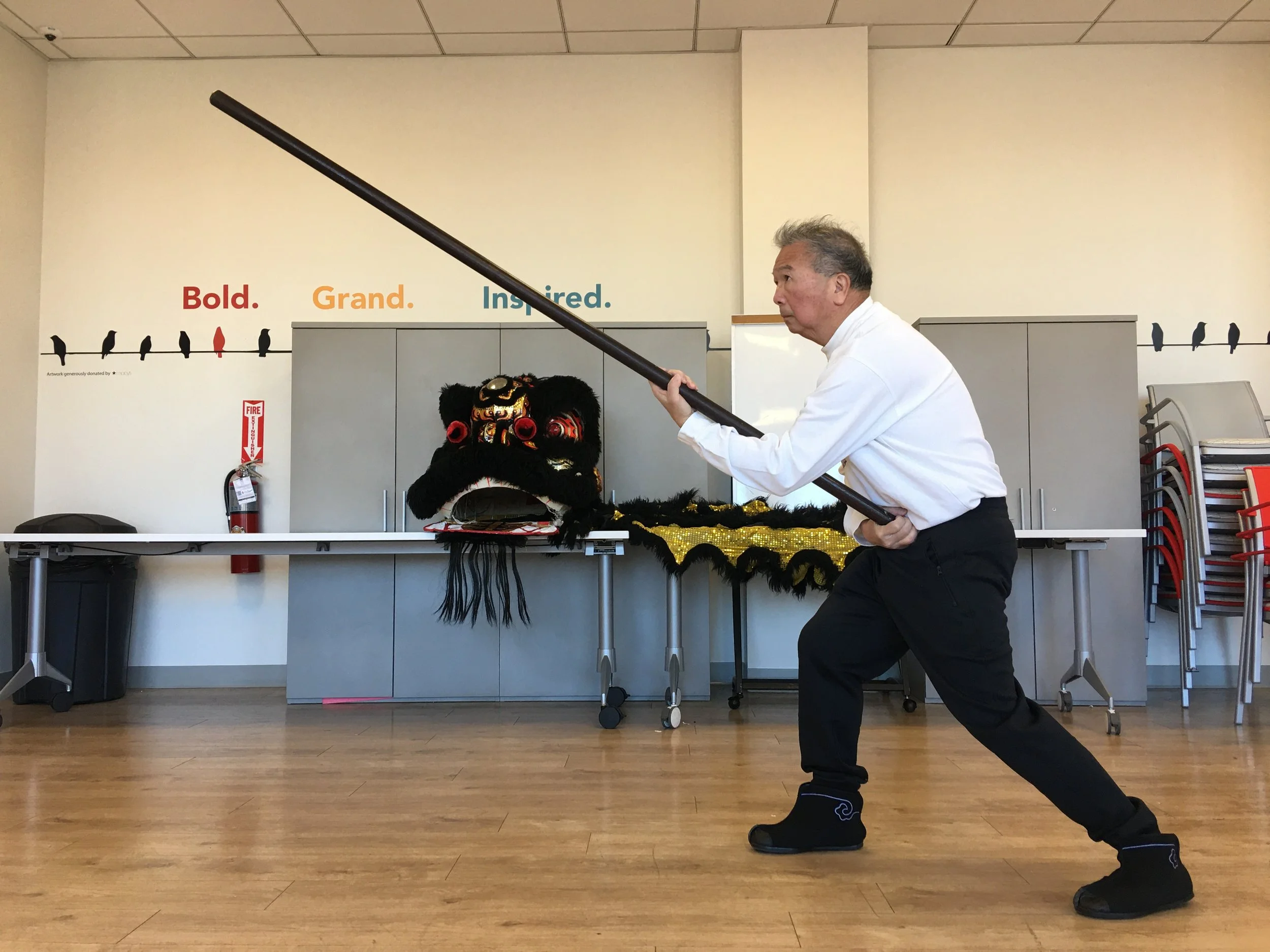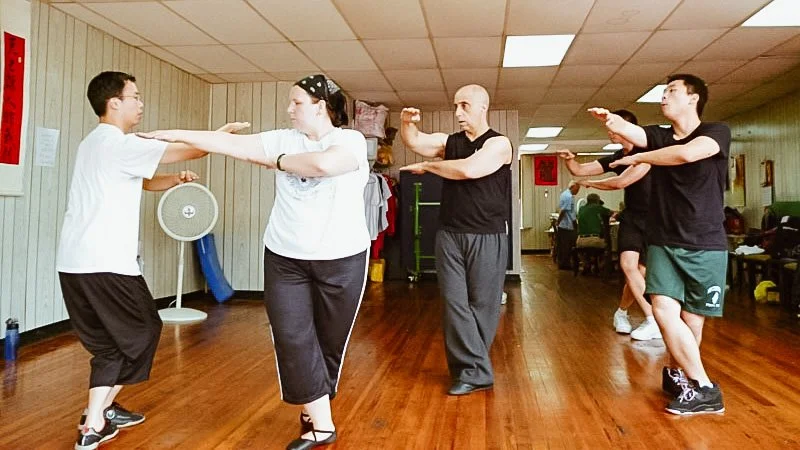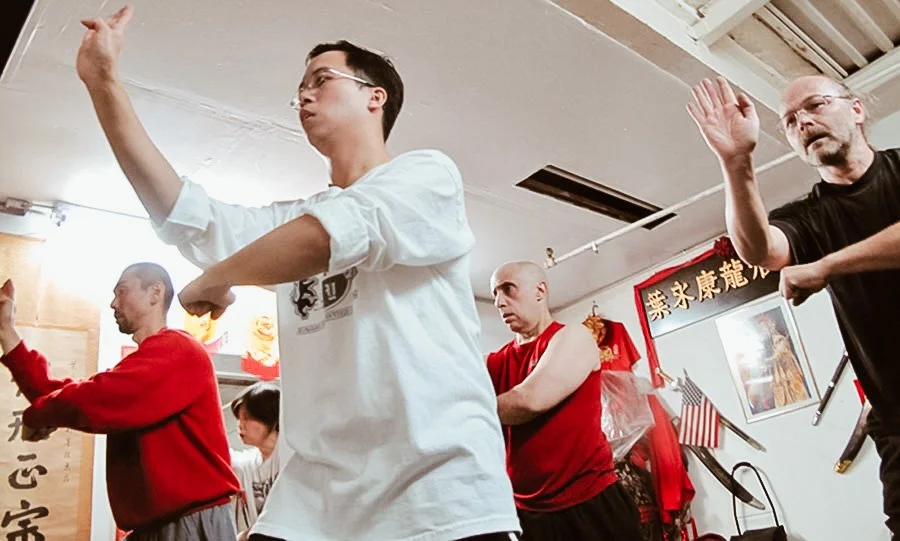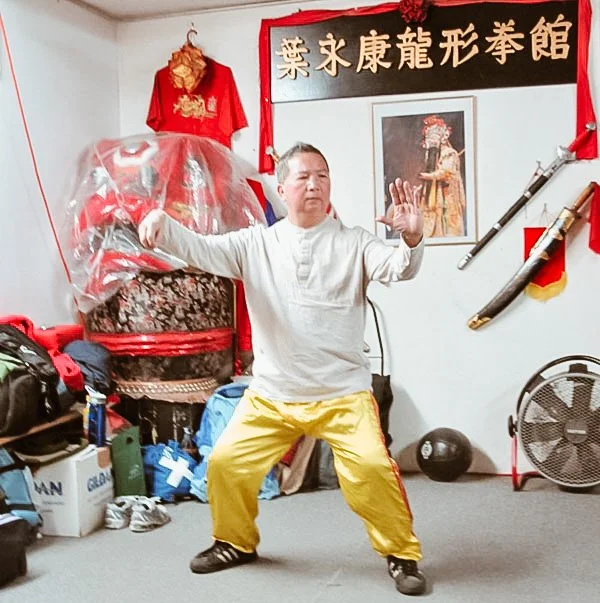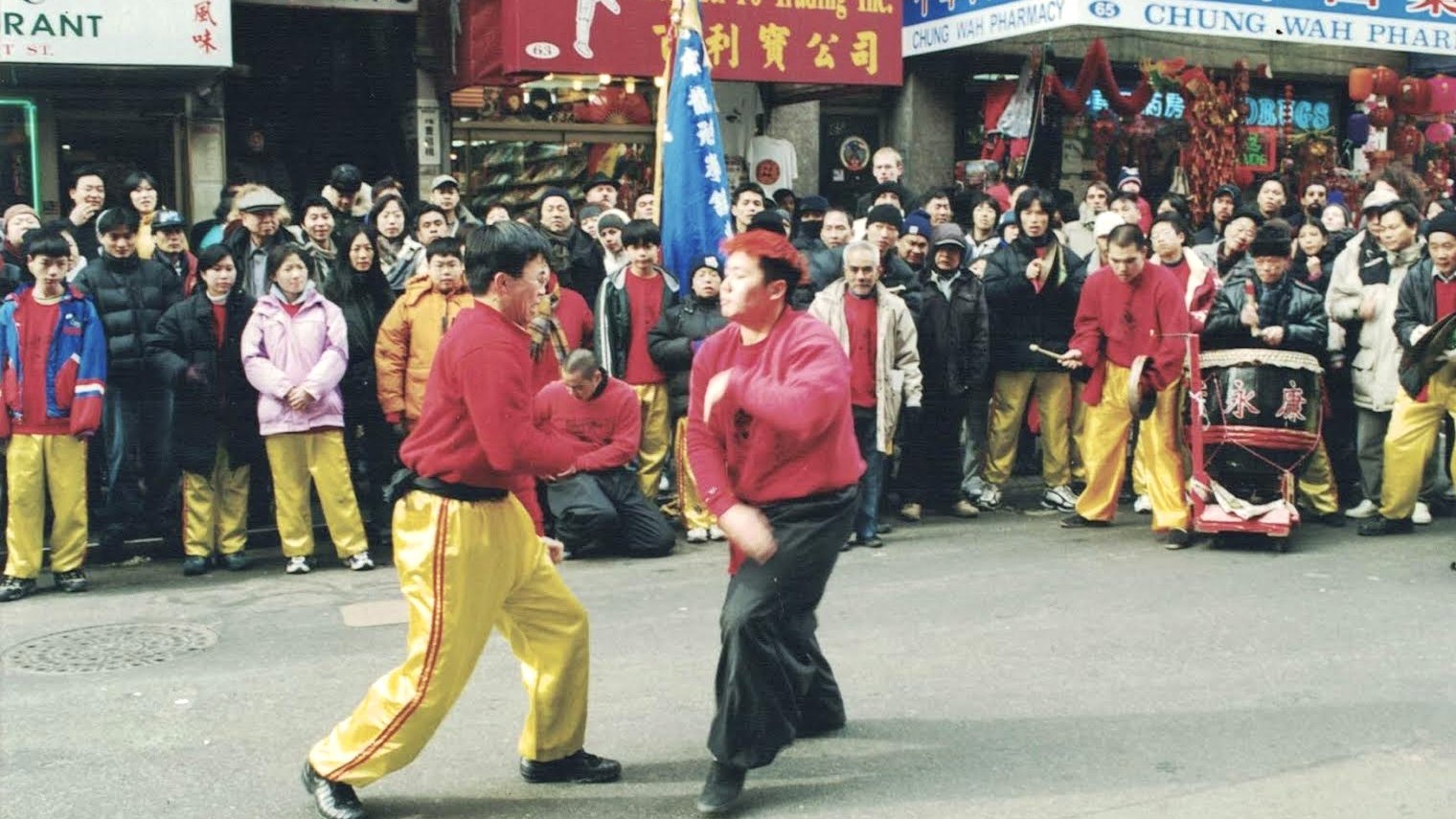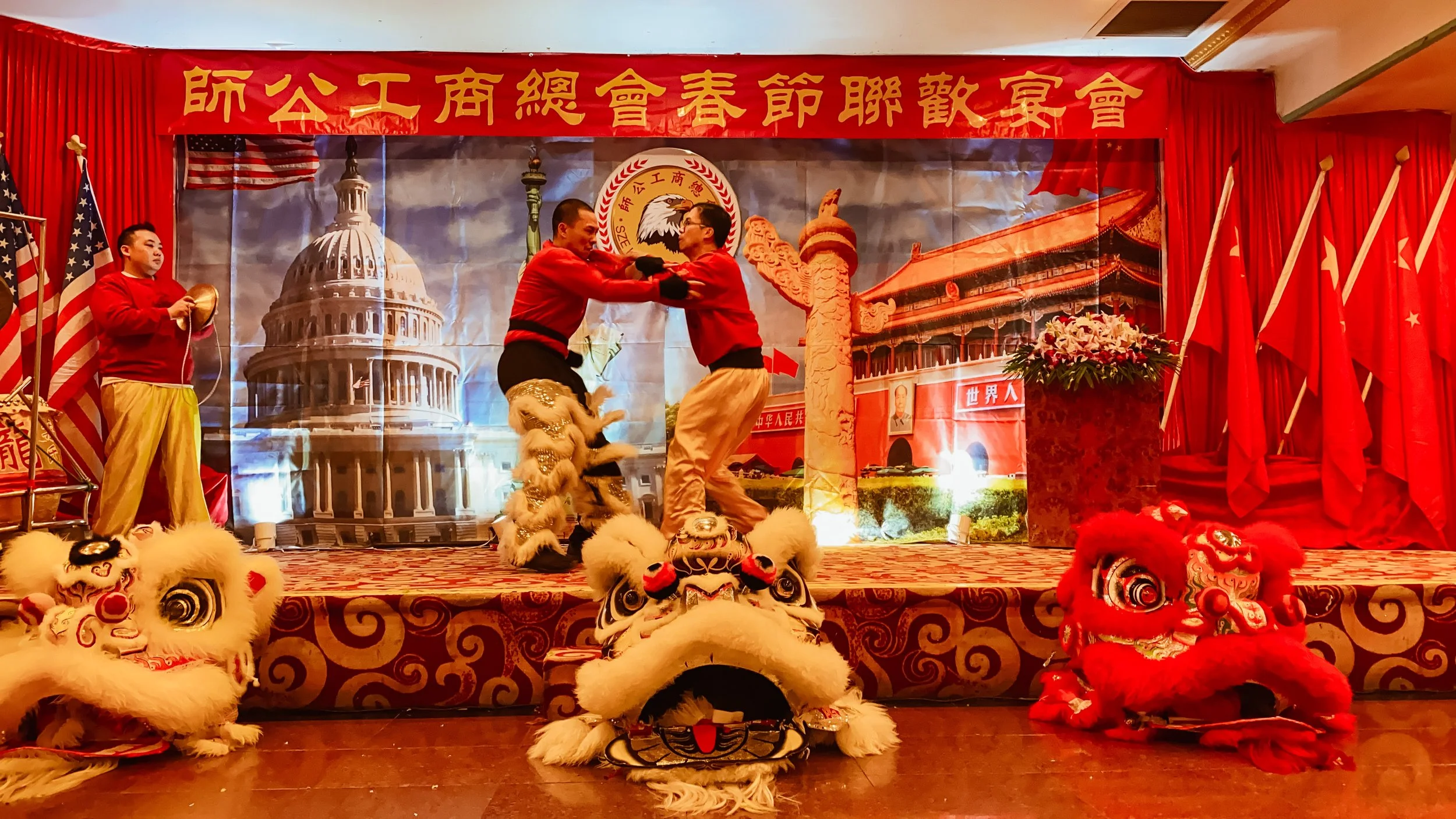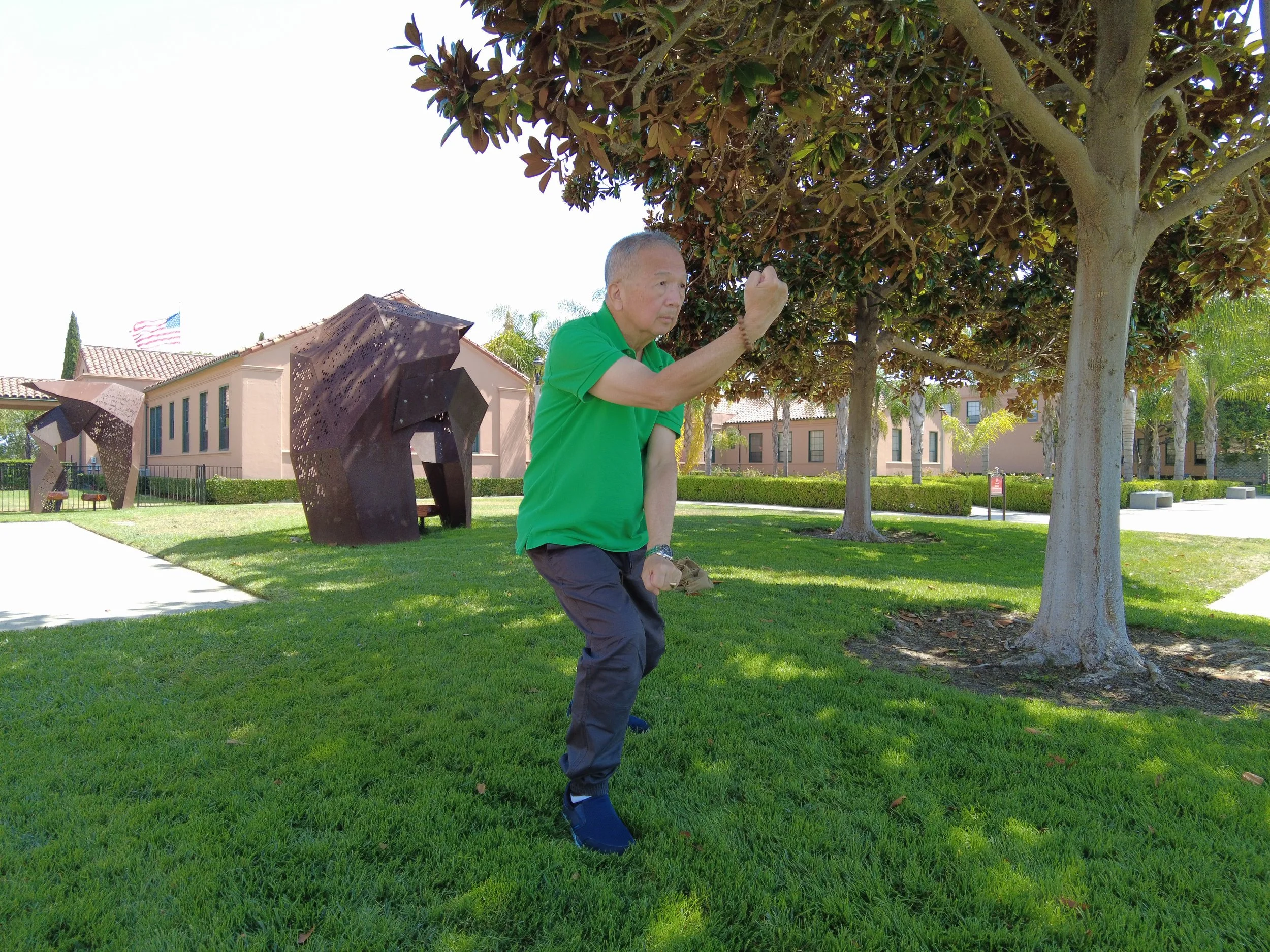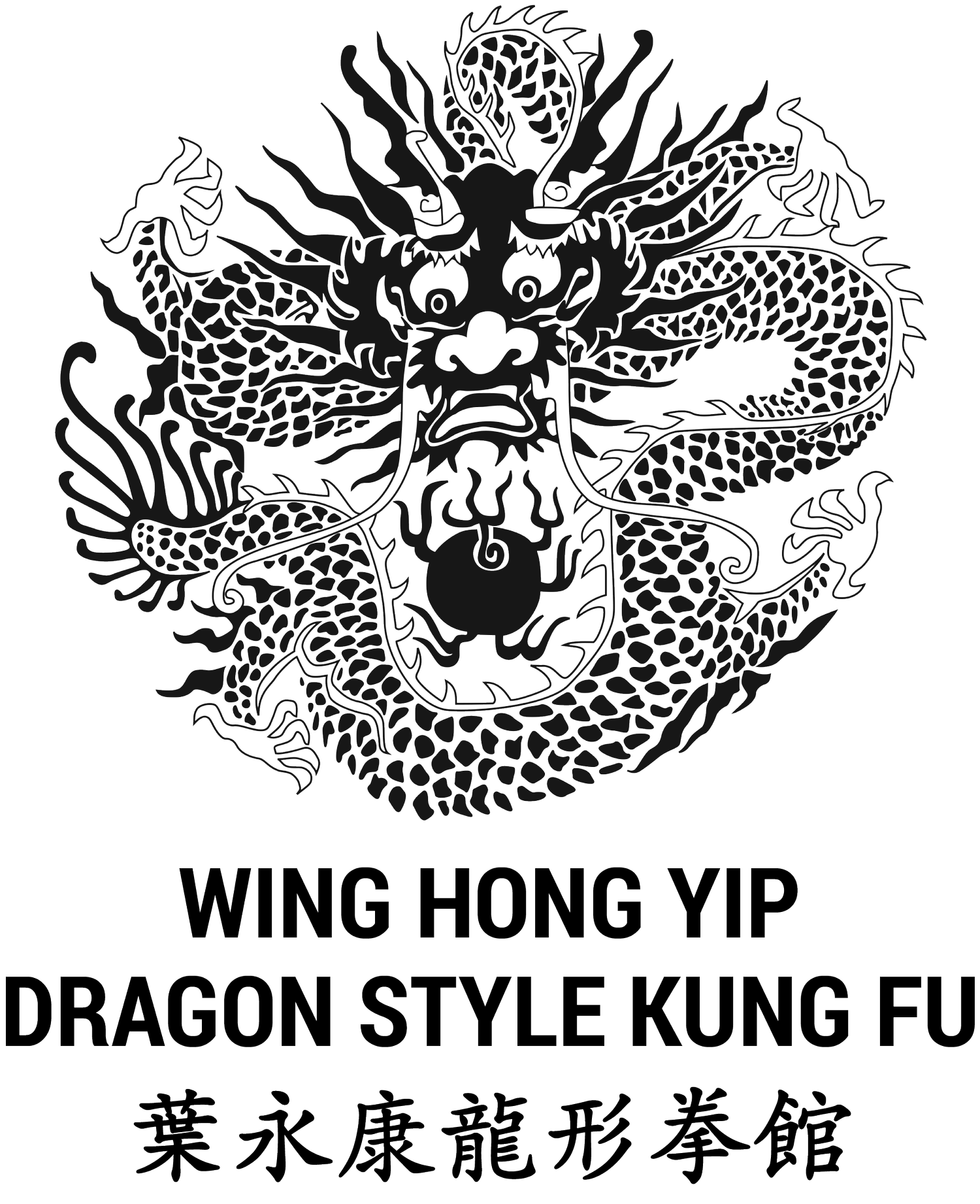Kung Fu
Dragon Style 龍形拳 Kung Fu is a fierce and protective system that utilizes hand techniques and primarily low kicks. Practitioners spend a great deal of time learning unique body mechanics to develop maximum power. Each technique is done with purpose and without any flowery movements in the context of both self-defense and combat. Students learn a variety of techniques that include punches, kicks, claws, grabs, and locks that uses various parts of the limbs for offense and defense. In sum, Dragon Style practitioners relentlessly press against an opponent(s) with an unremitting chain of attack. Empty hand forms, partner drills, and weapons are organized to give students a roadmap to develop proficiency in the system. Additionally, students gain health benefits from a physical activity that offers an excellent cardiovascular workout and improves wellness and balance.
Born to a kung fu family, Great Grandmaster Lam Yiu Gwai studied Lam Ga Gau (Lam Family style of kung fu) during his childhood. When he was a teen, he became one of the laymen to learn kung fu from Monk Tai Yuk Sim See 大玉禪師 during the late 1800s. Combining both styles of kung fu, he formulated what later became known as Dragon Style Kung Fu. Great Grandmaster Lam taught the system to many of his disciples throughout China and British Hong Kong. Lam Yiu Gwai served as a combat instructor for the military forces during the 1930s, along with Great Grandmaster Cheung Lai Chuen 張禮泉 of Bak Mei Kung Fu and Great Grandmaster Lam Yum Tong 林廕堂 of Mok Gar Kung Fu, at the prestigious Whampoa Military Academy 黃埔軍校. Both Dragon Style and Bak Mei Kung Fu are brother kung fu systems, as well as Hakka (an ethnic group that migrated from northern China to the south in the thirteenth century) styles of kung fu. Among Lam Yiu Gwai’s students is Grandmaster Cho Sum 曹森 who taught Sifu Yip this unique southern kung fu style.
Tai Chi
Wu Style Tai Chi uses a variety of hand techniques and kicks to control and to strike an opponent. The combination of relaxing the body, controlled breathing and body mechanics are an important part of training. Practitioners learn to parry, redirect attacks, employ punches, pushes, palm strikes, pulls, grabs, and locks to bring an opponent into submission.
Practitioners of Wu Style Tai Chi develop relaxation, improve circulation and increase their balance from the practice of both the traditional Wu Style Tai Chi long form and the Wu Style short form. Students learn the applications of the techniques to gain an in-depth and deeper appreciation of Wu Style.
Wu Cyun You 吳全佑 founded Wu Style Tai Chi, while his son Wu Gaam Cyun 吳鉴泉 is credited with further developing the style into its present form. Both the father and son were cavalry military officers who promoted their style initially in northern China and subsequently in Hong Kong. Grandmaster Ho Lai studied Wu Style Tai Chi under Great Grandmaster Lam Yum Tong 林廕堂 in the Guangdong Province of China. Sifu Yip studied the traditional 108-movement Wu Style Tai Chi with Grandmaster Ho Lai 何禮.
Pre-Requisites
Learning a new martial art and in particular, a kung fu or tai chi style can be an overwhelming experience. There is no particular preparation to commence your training journey. However, what we look for in our prospective students are those who are able to demonstrate the below attributes. Our organization’s values and expectations are the following:
- Willingness and the ability to meet our rules of conduct that is distributed and discussed with students on their first day
- Demonstrate humility to be willing, respectful and open to accept feedback from your instructors
- Show respect for all, while working collaboratively to improve the mastery of their kung fu
- Uphold the virtues of martial morality 武術 (code of ethics in kung fu) and our Dragon Style motto through demonstrated behaviors and authenticity
- Train diligently and to self-reflect on opportunities to improve and to seek appropriate feedback from your instructors and/or SiHings (senior students)
Instruction and Development
Our club members will receive guidance through multiple methods.
- Verbal cues and explanations from instructors
- Manual adjustments and corrections of their movements with feedback that is appropriate for a student’s level of proficiency
- Observe an instructor’s execution of a technique with explanations that are appropriate for a student’s development
- Collaborate with other learners in the classroom to develop teamwork etiquette and camaraderie, enhance communication skills and assess proficiency with explaining and demonstrating concepts learned, learn to work independently and build good character. Our club’s values, code of conduct and ethics in kung fu are integrated into our curriculum through demonstrated behaviors.
- Multiple opportunities to demonstrate their understanding through repetitions, group drills, forms (pre-arranged sequence of techniques) and their applications. Advancement is merit based that is determined from a combination of in-class formative assessments and individual evaluations.
- A hybrid of small group and one-on-one instruction are used during training.
Students will demonstrate proficiency throughout their class participation (i.e. no ranking examinations and no ranking system are used or recognized at our club) and meeting key benchmarks that will culminate in a gradual progression to learn new techniques, forms, and drills. A student’s advancement to acquire additional content means that previous material is not ignored, but also reinforced through continued practice in and out of the classroom. We look forward to welcoming you to learn these traditional Chinese martial arts and giving you a unique and effective training experience with over 70 years of combined teaching experience between the instructors.
We do not offer online classes, live streaming or private instruction.

